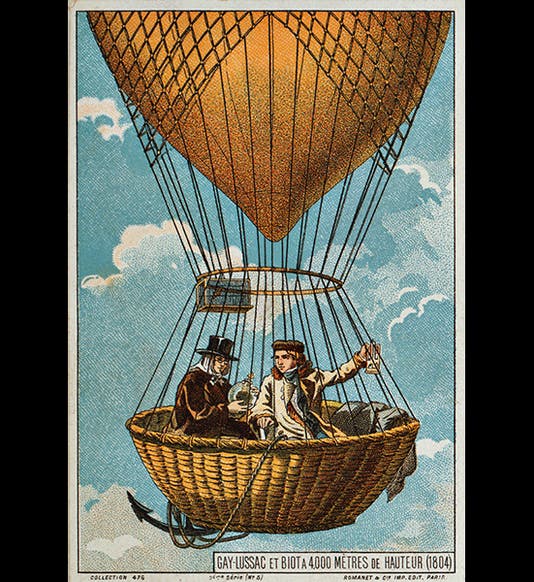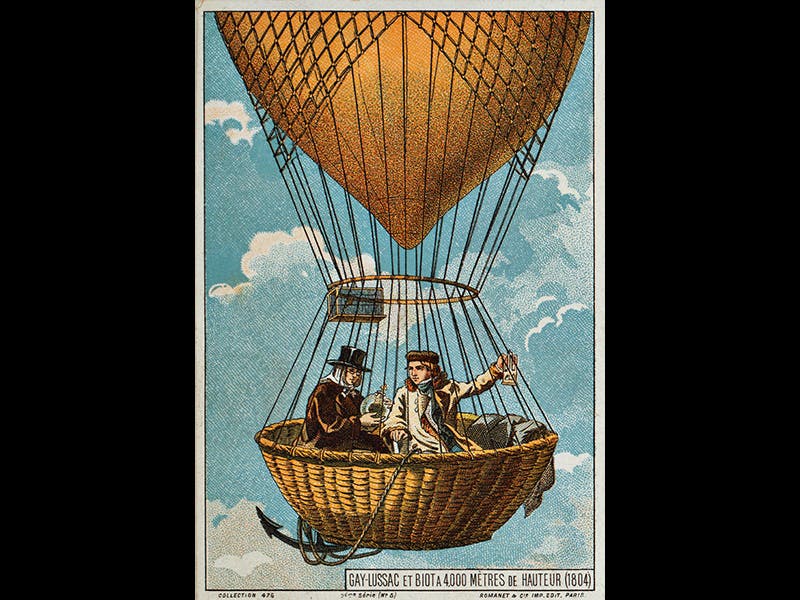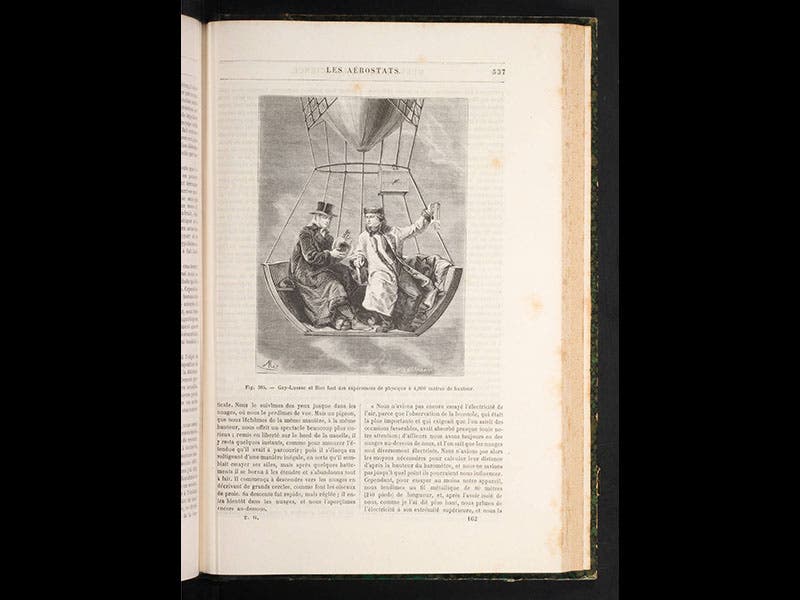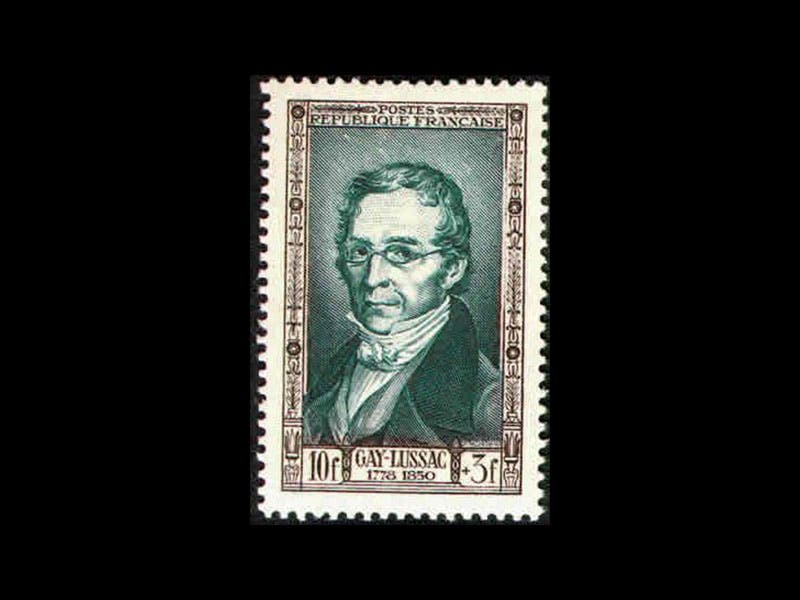Scientist of the Day - Joseph Louis Gay-Lussac
Joseph Louis Gay-Lussac, a French chemist, was born Dec. 6, 1778. Gay-Lussac is well known to modern chemists for two laws, one relating the volume of a gas to its temperature (volume increases linearly with temperature), and the second, called the law of combining volumes, which states that when two gases combine, their volumes are in the ratios of small whole numbers. This latter law, announced in 1808, demonstrated, for example, that when one combines hydrogen and oxygen to form water, it takes exactly two volumes of hydrogen for every one volume of oxygen. The law of combining volumes could be used to support John Dalton's atomic theory, published the very same year, for if water consists of two atoms of hydrogen and one of oxygen, then one might well expect that you would need two volumes of hydrogen for every one of oxygen (assuming that equal volumes of gases contain equal numbers of particles, and Amadeo Avogadro would offer this up as his own law, Avogadro's hypothesis, in 1811).
For the non-chemist, Gay-Lussac's career as a balloonist might be of more interest. With fellow chemist Jean-Baptiste Biot, Gay-Lussac made a balloon ascent of some 4 miles in 1804, collecting atmospheric samples all the way, and the next year he made a solo ascent and went even higher, setting an altitude record of some 23,000 feet that would stand for another 60 years. He also determined that the composition of the atmosphere does not change with altitude.
In 1867, Louis Figuier published an image of the Biot/Gay-Lussac ascent that has proved quite enduring in ballooning lore (second image); the illustration has been much copied, even appearing on a tea card (first image). Gay-Lussac has also been featured on a French postage stamp (third image). He was buried in the famous Père Lachaise cemetery in Paris (fourth image).
Dr. William B. Ashworth, Jr., Consultant for the History of Science, Linda Hall Library and Associate Professor, Department of History, University of Missouri-Kansas City. Comments or corrections are welcome; please direct to ashworthw@umkc.edu.










